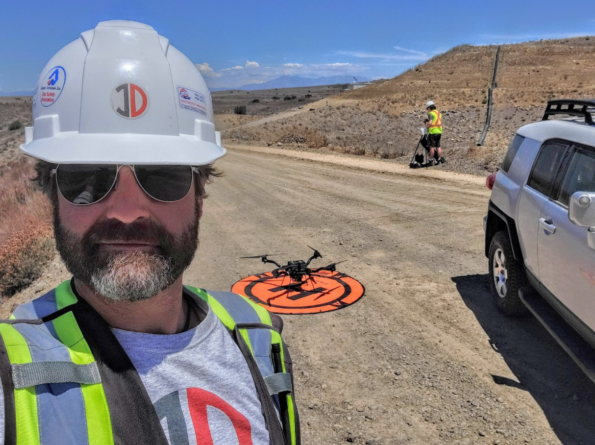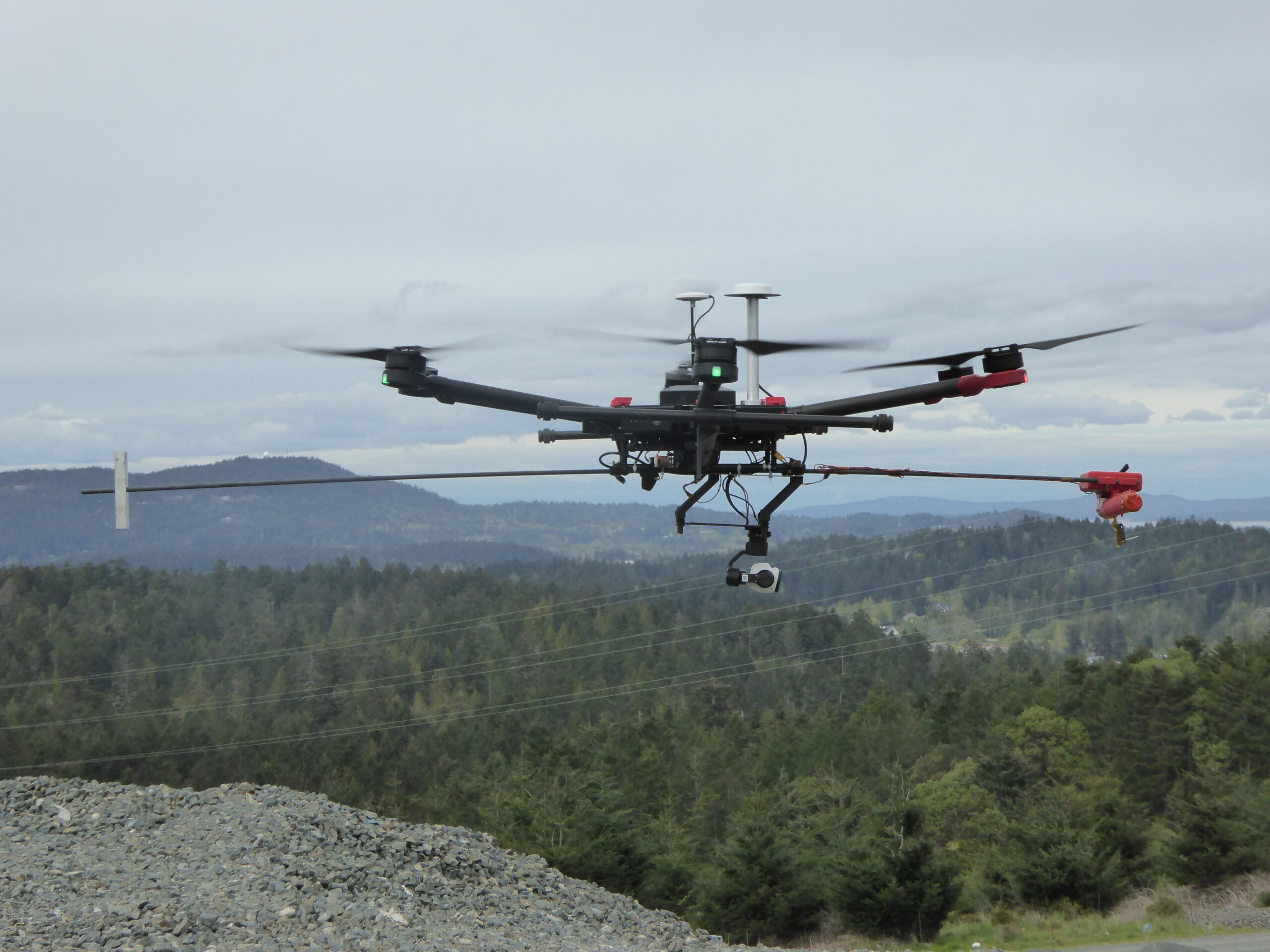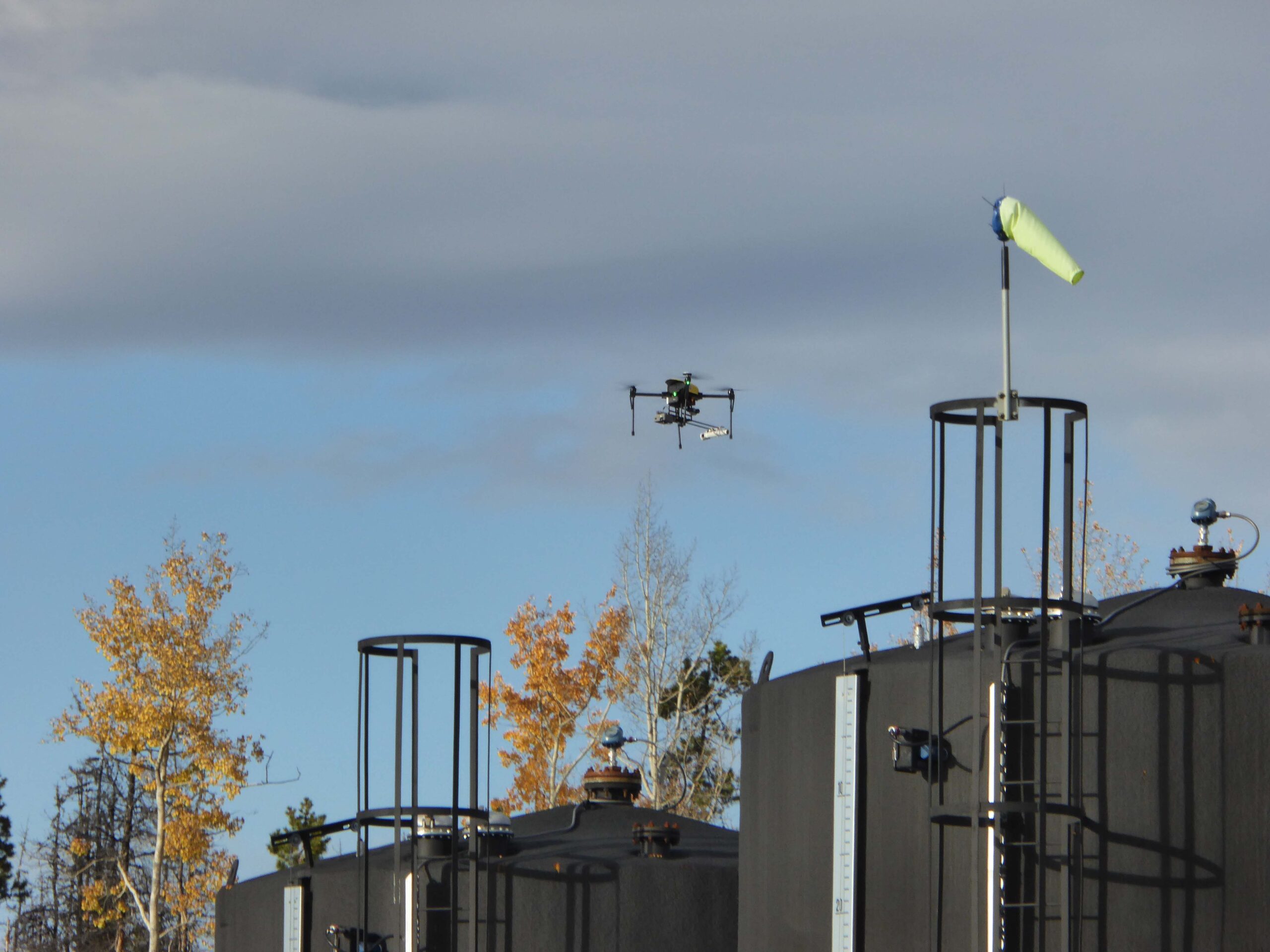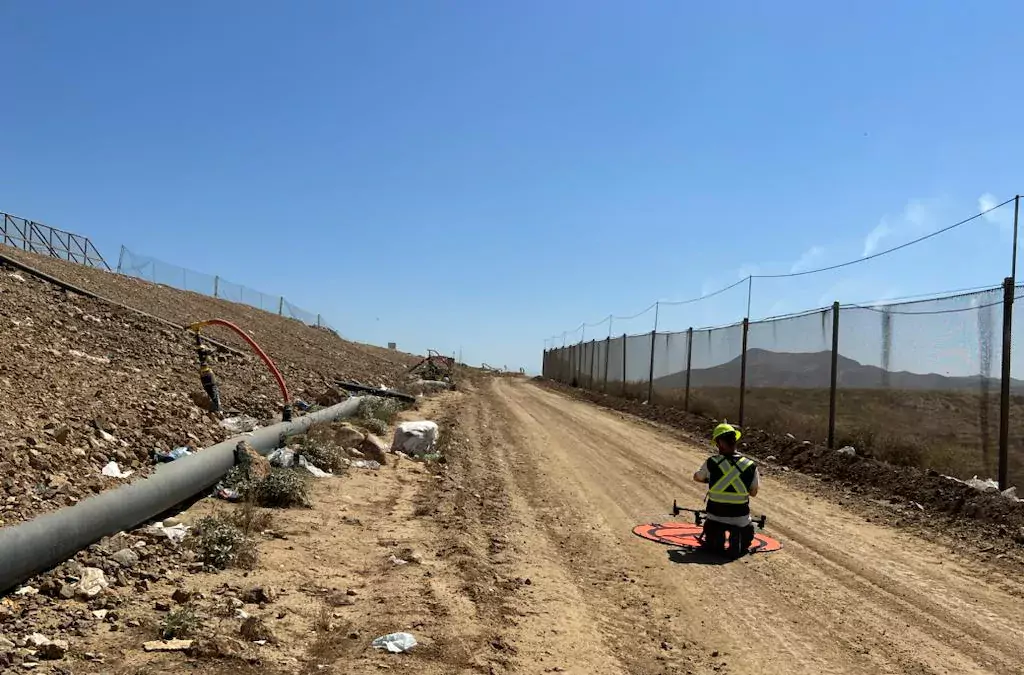
Aerometrix methane detection operation poised for new growth
By Scott Simmie
This job, on occasion, stinks.
But it’s all in a day’s work for Aerometrix, Canada’s only company specialising in methane detection using drones. It’s not the methane itself that smells – it’s actually an odourless gas – but it’s the locations where methane can be emitted.
Imagine flying a massive landfill on a hot day in California. Further imagine that, in order to keep the dust down, the landfill operators have recently sprayed the location with leachate – the slimy runoff juice created by the landfill itself. It’s very biologically active, and it smells really bad.
“It’s horrendous – horrible,” chuckles Eric Saczuk, who often carries out the complex flights.
“It just ends up just suffusing through you and anything that you’re wearing. It even seems like it goes into your skin.”
Thankfully, not all missions are like that. But all of them do achieve results.
And now, for multiple reasons, Aerometrix is poised to be taking on many more of them – branching out into detection at oil and gas refineries.
Below: Flight Operations Lead Eric Saczuk prepares for an Aerometrix flight

WHY METHANE DETECTION?
When it comes to climate change, methane is an invisible threat. Though we often hear about CO2 emissions, methane is a serious problem when it comes to greenhouse gases.
“Methane has more than 80 times the warming power of carbon dioxide over the first 20 years after it reaches the atmosphere,” states the Environmental Defense Fund.
“Even though CO2 has a longer-lasting effect, methane sets the pace for warming in the near term.”
So there’s increasing urgency to detect and mitigate methane emissions. At landfills, for example, once the emission points are detected, the gas can be trapped – and even used to generate electricity.
“The main emphasis recently has been on landfills, both in Canada and the US,” explains Aerometrix Co-Founder Philip Reece. “We flew 16 missions over the last 12 months.”
And these missions aren’t simply popping a drone up for a brief flight. Nor are they automated. Every Aerometrix flight has to be carried out manually.
“Over large sites like the Vancouver landfill, that took us three days of flying, six hours a day,” says Saczuk. “We fly these missions at five metres above the ground – and there’s lots of things that can get in the way at that level.”
Aerometrix flights deploy either the DJI M300 or M350 drone. But the secret sauce is not so much the drone as the sensors. (And it’s most certainly not the leachate.)
SENSORS
Aerometrix deploys two different sensors to detect methane. One of them is called an Open Path Laser Spectrometer (OPLS), developed by NASA for use on the Mars Rover. It was designed to detect trace gases. In the case of methane detection, the laser is tuned to a specific frequency that is absorbed when it encounters that particular gas. The greater the absorption, the higher the methane concentration.
The sensor requires “clean air” for accurate readings – meaning there can’t be any prop wash or turbulence caused by the drone itself. Aerometrix engineers built a brace that holds the sensor well forward of the drone for this purpose. Having that sensor and rod, of course, upsets the balance of the drone. In fact, Saczuk estimates the weight of the rod and sensor at roughly 800 grams, perched about 1.5 metres forward of the drone.
And while the flight controller is capable of compensating for that, Saczuk always performs a calibration once the drone is in the air.
“We take off to maybe three or four meters above the ground. Once the drone is airborne, we go into the controller and initiate the calibration. So the drone calculates its revised centre of gravity and knows what its steady state is. The two front propellers then spin a little bit faster to keep the nose from dipping.”
Flying manually, Saczuk uses Tripod Mode to limit the drone’s speed. The most accurate readings occur when flying at about five metres per second.
On an ideal flight day, there would be a steady wind at around eight metres per second. If the breeze is coming from the east and blowing over the landfill, this provides a couple of advantages. First of all, by positioning operations at the eastern end you can avoid most of the smell. But the real reason is because the drone will begin its flight in clean air not contaminated by methane. That will enable the methane, once detected, to really contrast with the surrounding environment.
“What we don’t like is no wind, because then the methane just goes up vertically and it’s variable – it just gets pushed around by a little vortices here and there,” says Saczuk.
The drone will make multiple passes (in this example, north and south) over the site. When the laser hits methane, some of those rays will be absorbed and some reflected, depending on the concentration. Flying multiple paths allows enough data to be gathered to create a visualization of methane in a vertical plane.
“We’ll do this on the upwind and downwind side of the site as well as a full perimeter to understand where the main emissions source likely are,” he adds.
“We shouldn’t be seeing much methane on that eastern side, assuming the wind is coming from the east. And then as we fly the western edge, that would capture all of the methane that’s being pushed by the wind and that would be the downwind curtain.”
While Saczuk is piloting, there’s a second controller that displays the data. A Raspberry Pi onboard the drone takes the data from the sensor and merges it with the flight data from the aircraft. So Saczuk can see the invisible gas while piloting.
The goal is obtain a really good cross-section, as illustrated below. Feel free to try your hand at the equation.
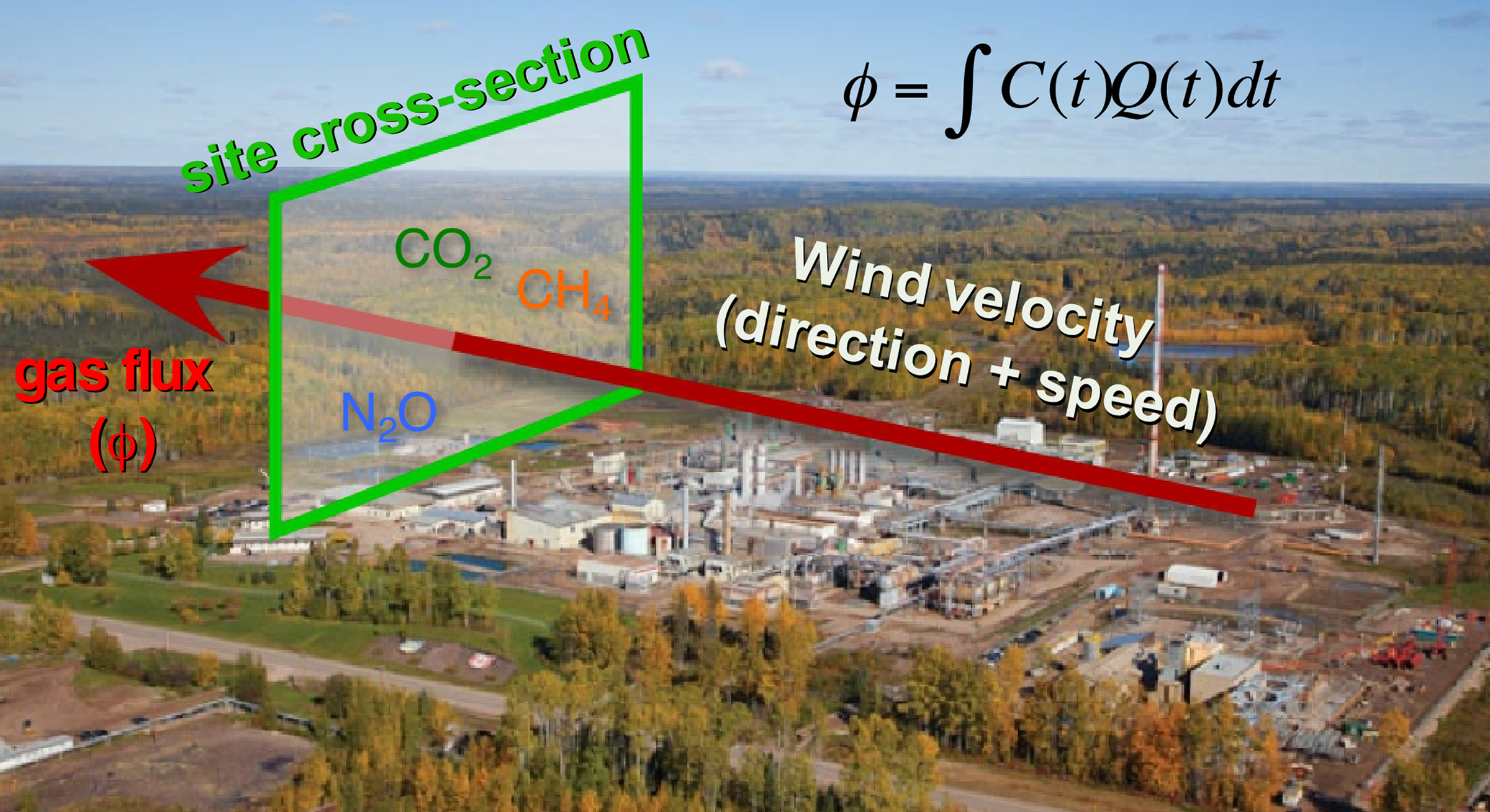
SENSOR TWO
The second sensor deployed is called a Laser Falcon. The sensor, mounting hardware and accessories will set you back close to $60k CDN. It is mounted directly on the drone and faces downward.
In this case, the laser is factory tuned for methane detection – it is the only gas the Laser Falcon can detect.
“It’s an active sensor that will detect the amount of absorption that’s happening. The scattering of the laser in the air tells the sensor how much methane there is not at a point – but through a column of air.”
In both cases, the data is crunched to make the invisible visible. The result is called a “flux curtain” or “flux plane” – with differing colours representing different concentrations of methane, measured in parts per million. In the graphic below, the greatest concentrations are seen in the middle of the image, just below the centre.
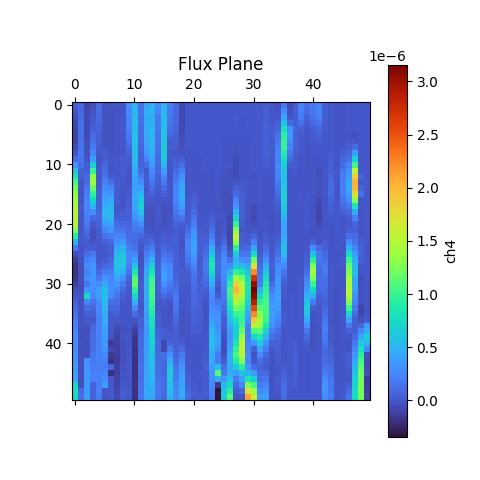
POISED FOR GROWTH
In December the Honourable Steven Guilbeault, Minister of Environment and Climate Change, announced draft methane regulations. These regulations aim to reduce methane emissions by 75 per cent by the year 2030, when compared with emission from 2012. The focus is on the oil and gas industry.
“Oil and gas facilities are the largest industrial emitters of methane in Canada—they release about half of total methane emissions,” reads the draft.
“These releases occur during normal operation of equipment and from leaks. To comply with Canada’s existing methane Regulations, industries had to adopt practices to monitor for leaks and ensure that repairs happen to reduce the amount of gas intentionally vented into the air.
“Under the draft methane amendments, the Government of Canada is enhancing the emissions-monitoring requirements through a risk-based approach to structure inspections for fugitive emissions—facilities with equipment that has greater potential for emissions must undertake more frequent inspections. All inspections must be conducted using instruments with a standard minimum detection limit, and repair timelines will depend on emissions rates. Further, the draft regulations introduce an audit system, requiring one annual third-party inspection to validate company program results.”
In other words, it won’t be long before oil and gas facilities will need to bring experts like Aerometrix onboard to verify that the reported data is accurate.
“Lowering methane emissions from our oil and gas sector is one of the fastest and most cost-effective ways we can cut the pollution that is fueling climate change,” said Minister Guilbeault in this news release.
“As the world’s fourth largest oil and gas producer, we have both the responsibility and the know-how to do everything we can. At this time of robust profit margins and high energy prices, there has never been a better time for the oil and gas sector to invest in slashing methane emissions.”
NEW INVESTMENT
In creating Aerometrix, co-Founders Philip Reece and Michael Whiticar developed a solution to a significant and largely invisible problem. Now, with even greater emphasis on reducing methane emissions, Aerometrix has attracted a major new investor.
That investor is Omar Asad, the company’s new Director. He sees great potential ahead.
“The cutting-edge technology utilised by Aerometrix is unmatched and has already translated into significant savings for clients,” says Asad. “What’s more, we offer both a much-needed and innovative solution – while helping to reduce methane emissions at a critical time.”
Asad’s investment, in conjunction with Canada’s impending methane legislation, paves the way for accelerated growth.
Below: Eric Saczuk points to the second controller, highlighting real-time methane detection
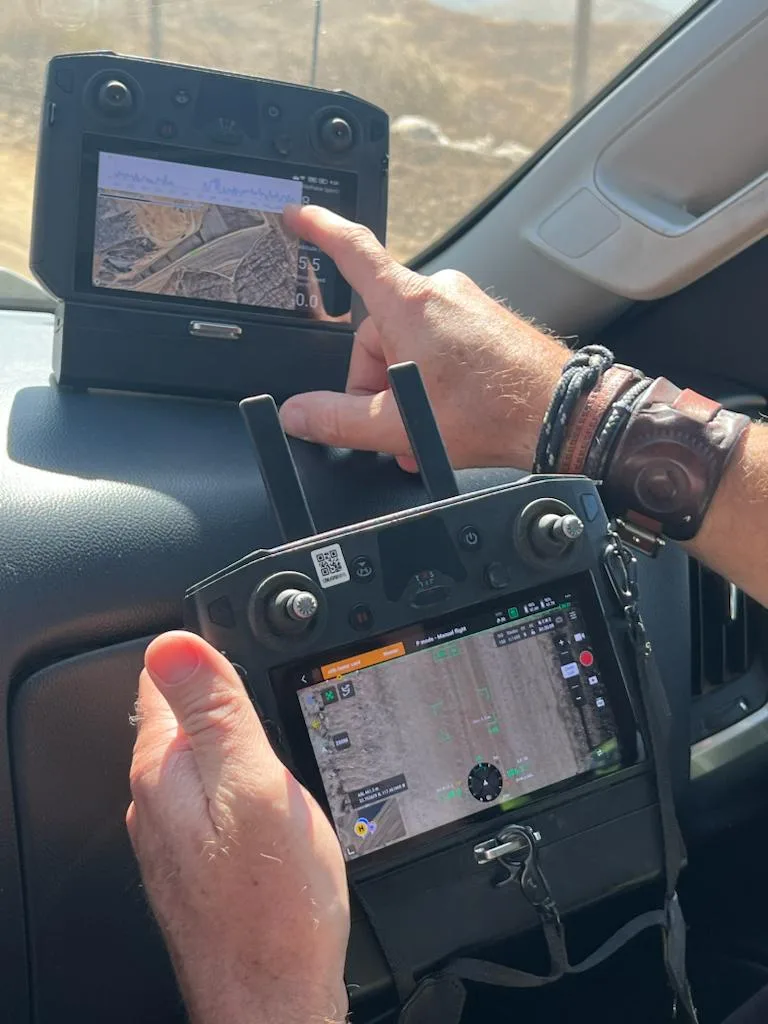
INDRO’S TAKE
Philip Reece, of course, is also the Founder and CEO of InDro Robotics. And he’s clearly pleased with both the investment – and the growth trajectory.
“Landfill detection alone has kept Aerometrix busy and profitable,” says Reece. “With the pending legislation we are poised for significant growth in the oil and gas sector.
“Not only is using these sensors with drones more accurate than traditional hand-held walk-arounds, but Aerometrix has racked up years of experience in turning our findings into clear and actionable data. This company, particularly with Omar onboard, is ready for the next phase of growth.”
Interested in learning more about methane detection by Aerometrix? Contact them here.

